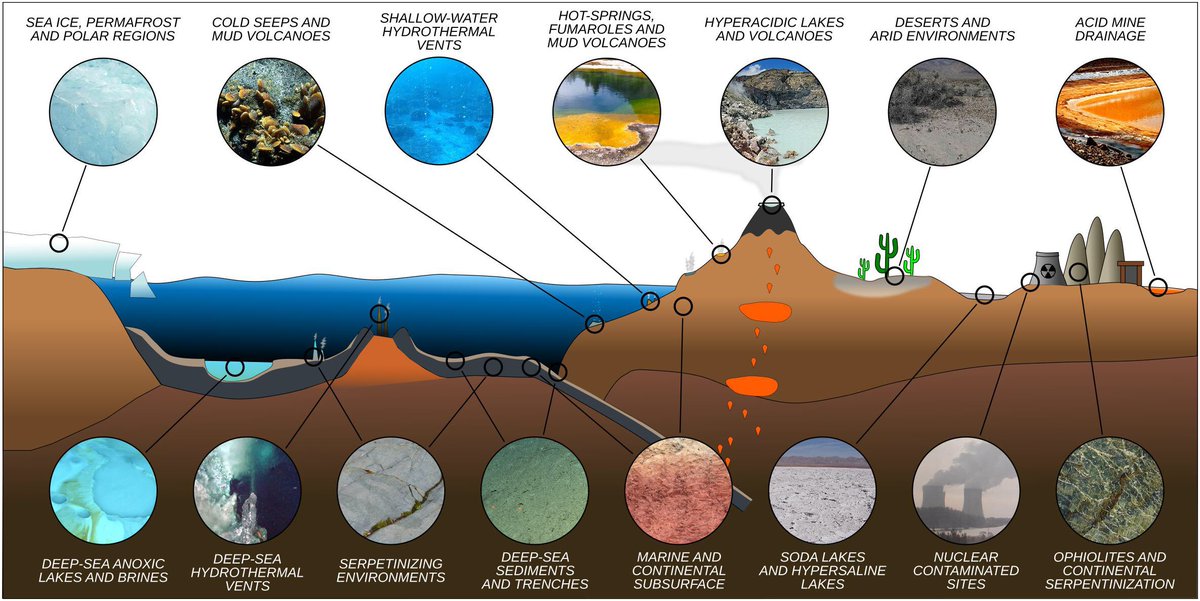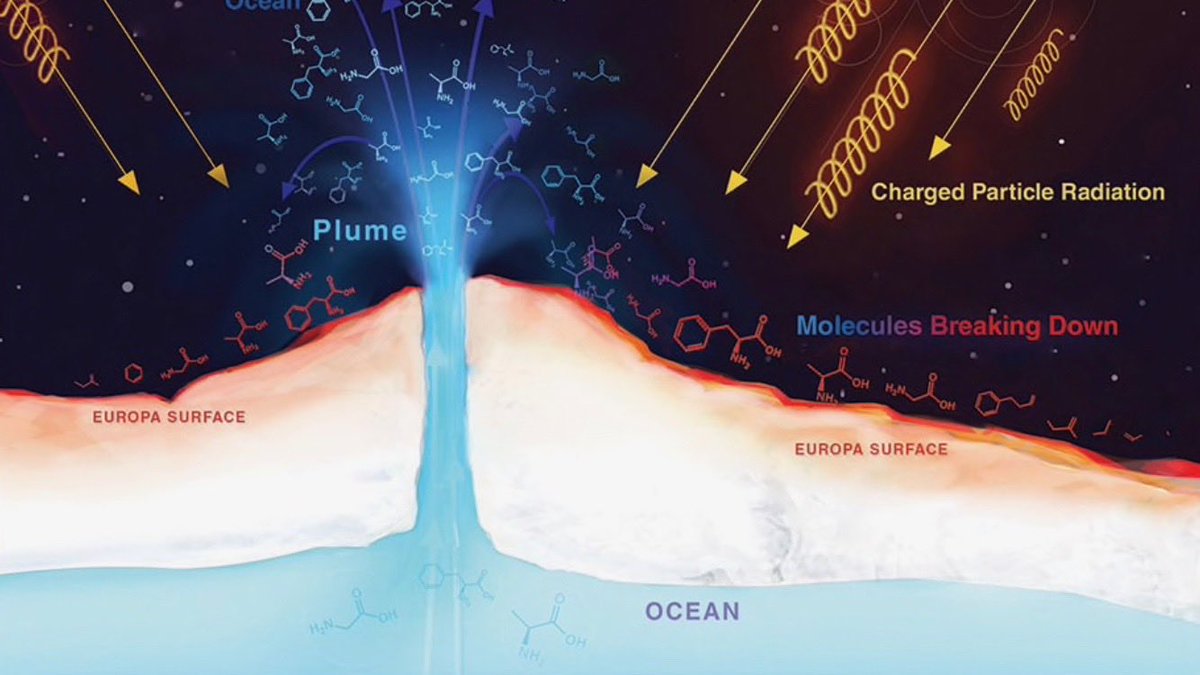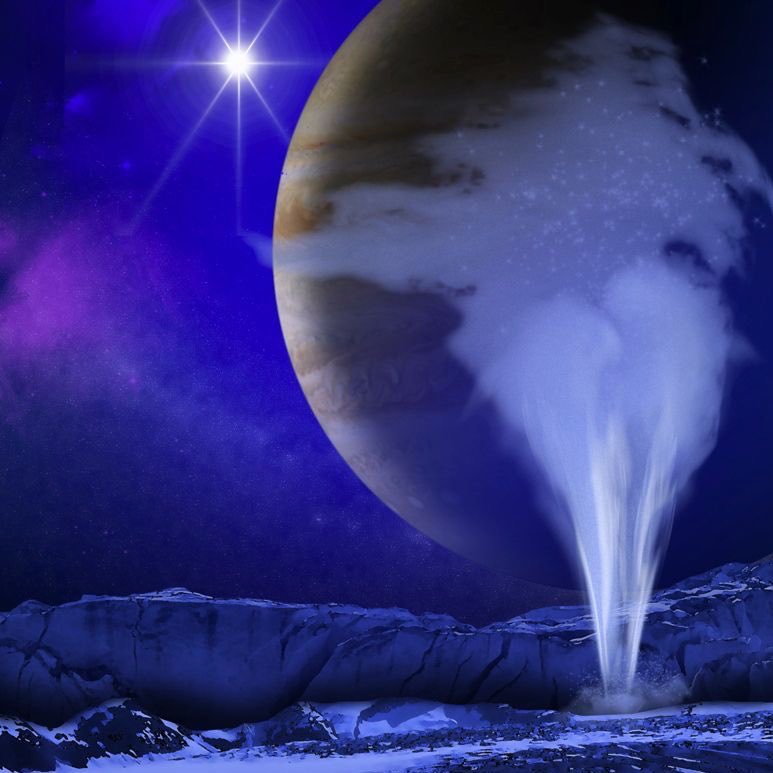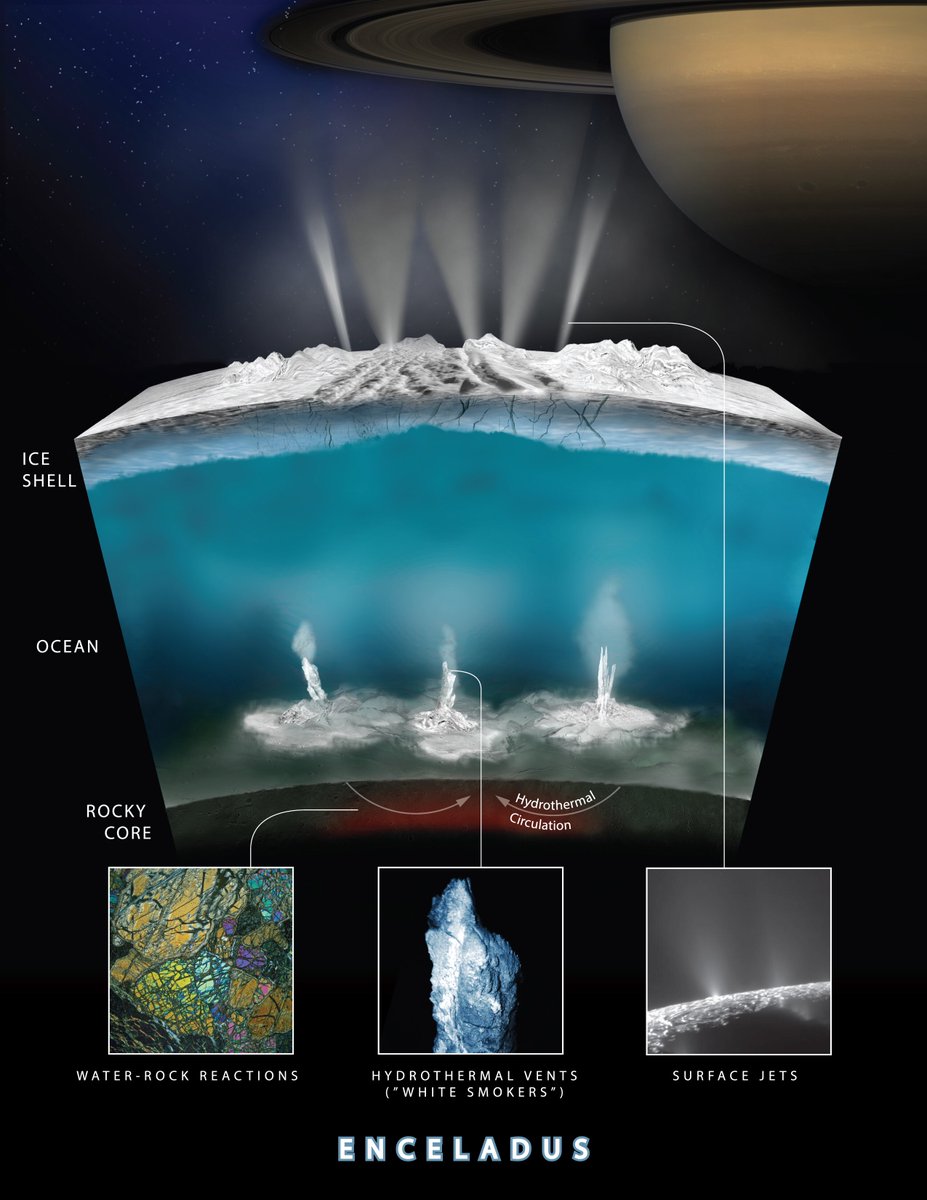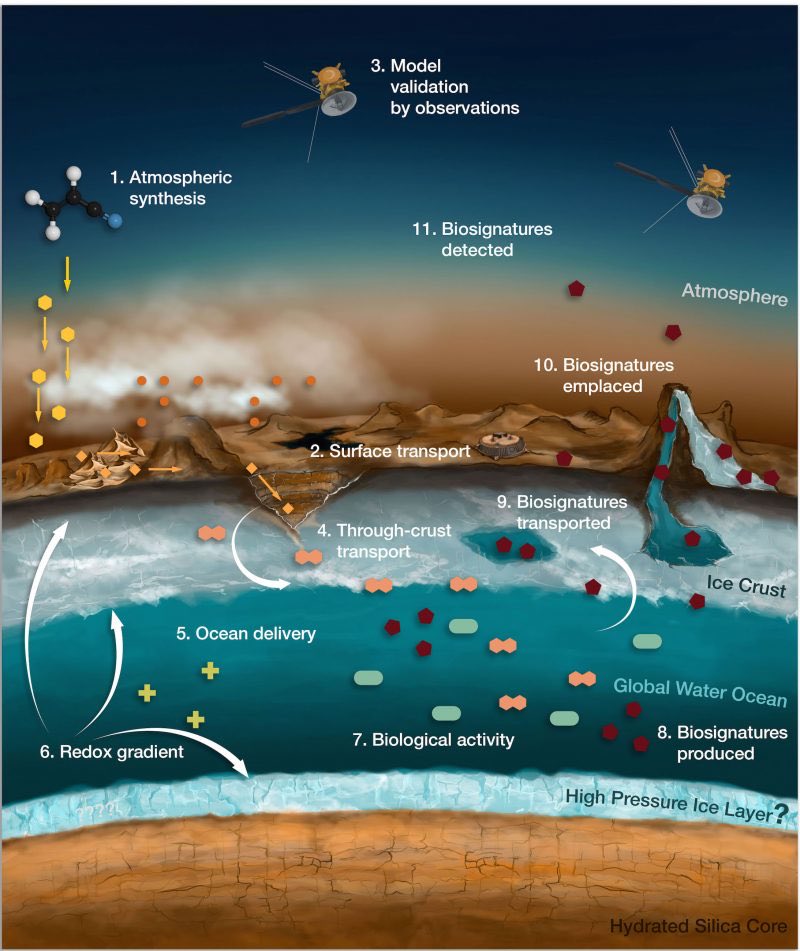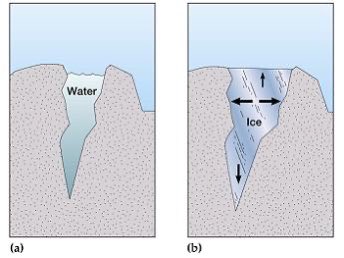In our continued search for life outside of Earth, scientists have come to the conclusion that water equals life. Life on Earth requires water to survive. Without liquid water, it’s safe to assume that we wouldn’t be here. Currently, Earth is the only planet (or moon)...
(2)
(2)
that we know of with liquid water on its surface. This is due to it being in the habitable zone, which means that it’s the right distance away from the Sun for liquid water to form on the surface and not immediately evaporate or freeze. However, this does not mean that...
(3)
(3)
water cannot exist on other planets or moons within our Solar System (and beyond).
You may be thinking that if water doesn’t exist in liquid form, then surely life cannot thrive in such an environment. However, we must look to our own planet and think about other places...
(4)
You may be thinking that if water doesn’t exist in liquid form, then surely life cannot thrive in such an environment. However, we must look to our own planet and think about other places...
(4)
where life can thrive. This is where extremophiles come into the picture.
Extremophiles are organisms that can survive in seemingly inhospitable environments.
These can include: deep sea thermal vents, volcanoes, and permafrost.
(5)
Extremophiles are organisms that can survive in seemingly inhospitable environments.
These can include: deep sea thermal vents, volcanoes, and permafrost.
(5)
If extremophiles exist on Earth, then who’s to say that they don’t exist on other planets or moons?
We like to assume that due to the immeasurable size of the universe, that life would be very far away from us.
But what if it’s lurking in our own planetary neighborhood?
(6)
We like to assume that due to the immeasurable size of the universe, that life would be very far away from us.
But what if it’s lurking in our own planetary neighborhood?
(6)
Based on the research done in our own Solar System, it has been concluded that there may be several candidates for subsurface oceans.
These include: the dwarf planet Ceres, Europa, Enceladus, Titan, and Triton. There may even be a subsurface ocean on Pluto!
(7)
These include: the dwarf planet Ceres, Europa, Enceladus, Titan, and Triton. There may even be a subsurface ocean on Pluto!
(7)
If we are going to search for life, then looking in our Solar System is essential. We may just be surprised with what we find. (Spoiler alert: there’s a LOT).
(8)
(8)
Europa: There is a lot of evidence that suggests Jupiter’s moon Europa has a subsurface ocean. By observing the Galileo probe’s magnetometer, there was deflection when Europa goes through Jupiter’s magnetic field. It was exactly where you’d expect if there were an...
(9)
(9)
induced field. The only way there would be an induced field is if there were salty water underneath the moon’s crust.
The surface is also covered in water-ice and the topography is not very tall. There are not many impact craters and the surface seems to be “resurfacing”...
(10)
The surface is also covered in water-ice and the topography is not very tall. There are not many impact craters and the surface seems to be “resurfacing”...
(10)
itself.
While this may sound exciting, it is just indirect evidence. The only source of “direct” evidence we have is an observation from Hubble in 2013, when astronomers saw what they believed to be liquid water coming out in a plume from a surface vent (not conclusive).
(11)
While this may sound exciting, it is just indirect evidence. The only source of “direct” evidence we have is an observation from Hubble in 2013, when astronomers saw what they believed to be liquid water coming out in a plume from a surface vent (not conclusive).
(11)
Enceladus: Prior to Cassini, scientists had already set their sights on Enceladus, one of Saturn’s moons.
Data from Cassini’s magnetometer prompted scientists to want to take a closer look at the moon.
Something was pushing Saturn’s magnetic field near Enceladus.
(12)
Data from Cassini’s magnetometer prompted scientists to want to take a closer look at the moon.
Something was pushing Saturn’s magnetic field near Enceladus.
(12)
What could it have been? Cassini was able to unravel the truth: Enceladus was an active moon with a hidden ocean of salty liquid water beneath its crust!
Another interesting fact about the moon is that there are icy jets released into space from it (similar to Europa).
(13)
Another interesting fact about the moon is that there are icy jets released into space from it (similar to Europa).
(13)
Titan: Cassini was also able to give scientists insight into another one of Saturn’s most well-known moons, Titan.
It was able to reveal Titan’s hidden ocean underneath an icy crust.
During Titan’s orbit, scientists were able to study the moon’s shape at different parts...
(14)
It was able to reveal Titan’s hidden ocean underneath an icy crust.
During Titan’s orbit, scientists were able to study the moon’s shape at different parts...
(14)
of it. At some points it was more elongated, and at others it was more round. Scientists used Cassini to measure the bulges of Saturn’s pull on Titan.
“A liquid layer between the external, deformable shell and a solid mantle would enable Titan to bulge and compress as...
(15)
“A liquid layer between the external, deformable shell and a solid mantle would enable Titan to bulge and compress as...
(15)
it orbits Saturn” ( http://Astrobio.net ). It is most likely that Titan’s ocean is made of liquid water due to the surface mostly being comprised of water-ice.
(16)
(16)
Pluto: Last, but CERTAINLY not least, is EVERYONE’S FAVORITE (dwarf) PLANET (no, I’m not salty at all).
Based on data from the New Horizons mission in 2015, Pluto may contain a subsurface ocean.
Scientists compared geological observations of Pluto during the flyby...
(17)
Based on data from the New Horizons mission in 2015, Pluto may contain a subsurface ocean.
Scientists compared geological observations of Pluto during the flyby...
(17)
of New Horizons with models of its origin and evolution.
It is now believed that Pluto used to be very hot, which provides explanations for the cracks on its surface, along with many ridges.
This warm and potentially violent formation of the (dwarf) planet may have...
(18)
It is now believed that Pluto used to be very hot, which provides explanations for the cracks on its surface, along with many ridges.
This warm and potentially violent formation of the (dwarf) planet may have...
(18)
warmed its interior enough to form a subsurface ocean! How can we infer this you might ask. Well, we know from our own planet that when water freezes it expands, which is how cracks can get larger.
Once Pluto’s interior cooled after its formation, its surface was able...
(19)
Once Pluto’s interior cooled after its formation, its surface was able...
(19)
to stretch and create the recognizable features that we can see today from New Horizons images.
(20)
(20)
Final thoughts: The discovery of these subruface oceans within our Solar System is exciting and rapidly changing the way we think about Planetary Science.
It shows that liquid water may be more common than we previously thought, although it does not imply that life exists...
(21)
It shows that liquid water may be more common than we previously thought, although it does not imply that life exists...
(21)
on all of these objects.
I’m not sure if we’ll be able to figure out if there are extremophiles living in these subsurface oceans, but it could be possible in the near future if we are able to make an underwater probe that could penetrate the icy crust and explore the...
(22)
I’m not sure if we’ll be able to figure out if there are extremophiles living in these subsurface oceans, but it could be possible in the near future if we are able to make an underwater probe that could penetrate the icy crust and explore the...
(22)
oceans.
Here’s an interesting article if you want to learn more about NASA’s plans to explore these oceans:
(23) https://www.spaceflightinsider.com/missions/solar-system/nasa-developing-ai-future-exploration-extraterrestrial-subsurface-oceans/
Here’s an interesting article if you want to learn more about NASA’s plans to explore these oceans:
(23) https://www.spaceflightinsider.com/missions/solar-system/nasa-developing-ai-future-exploration-extraterrestrial-subsurface-oceans/
That was the end of the thread! Let me know your thoughts on this subject! There is SO much more to be discovered, and hopefully it leads to something extraordinary.
What do you think? Will we find life in a subsurface ocean?

What do you think? Will we find life in a subsurface ocean?


As always, the blog post is MUCH more detailed, and I mention more moons, since the thread is difficult to put everything into (plus I have to have something different on the blog lol).
Please check it out!! https://jaz21693.wixsite.com/mysite/post/subsurface-oceans
https://jaz21693.wixsite.com/mysite/post/subsurface-oceans
Please check it out!!
 https://jaz21693.wixsite.com/mysite/post/subsurface-oceans
https://jaz21693.wixsite.com/mysite/post/subsurface-oceans

 Read on Twitter
Read on Twitter
